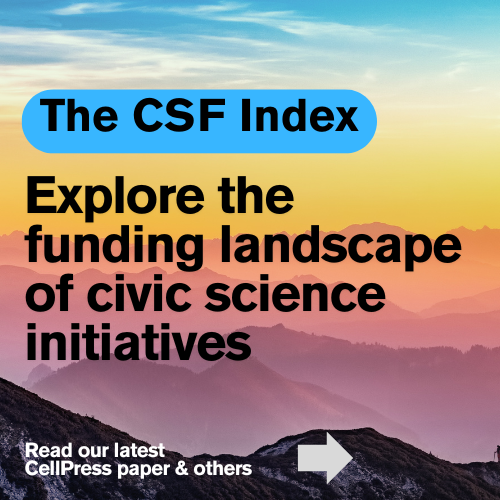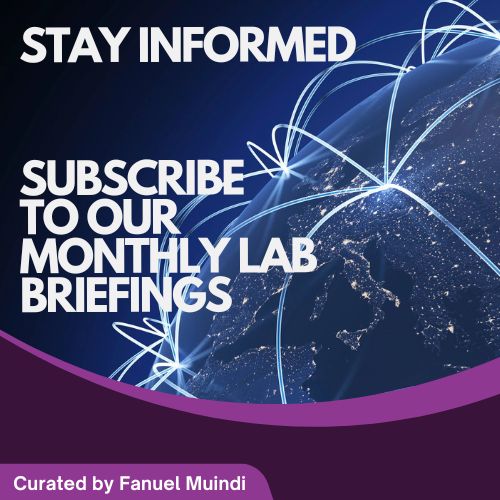Civic Science Observer
Visualizing the Lewenstein and Baram-Tsabari framework for organizing science communication trainings
In 2017 and 2022, Lewenstein and Baram-Tsabari published papers that showcase a systematic approach to science communication training based on learning theory and a community-of-practice framework [1,2]. The authors identified “threshold concepts” that help learners progress from peripheral participation to becoming core members of the science communication community. They also organized learning objectives into essential and advanced categories, matching them to three defined groups: occasional, active, and professional science communicators.
The overarching goal of their papers has been to transform science communication training from being opportunistic—dependent on the individual interests of trainers—into a structured and systematic practice supporting the growth of a professional community of communicators. The visualization presented here shares this goal by visualizing the central ideas presented in those papers and others [3] to increase the accessibility of the framework and support ongoing discussions among stakeholders.
In the center of the diagram in Part A are the science communication goals representing the foundational purposes driving all communication and public engagement efforts. As others have noted previously [4,5], the key is in identifying science communication goals in advance; thus, this critical activity is placed in the center as the starting point. Radiating from the center of these goals are “competency strands,” each representing a specific domain of foundational communication skills that have been previously identified. Different colors are used to illustrate the six strands (identity, participation, affective, reflection, methods, content knowledge) identified by Lewenstein and Baram-Tsabari.
Intersecting the strands are three concentric progressions of practice (labeled 1, 2 and 3), as described in the paper and visualized with different shades of the respective competency strand color. The innermost practice layer represents occasional science engagers, who participate infrequently in science communication activities. The intermediate layer corresponds to active science engagers, who regularly integrate communication into their professional activities and continuously refine their skills. The outermost layer identifies professional science engagers, individuals for whom science engagement constitutes a central and defining component of their careers.
As such, different science communication goals (e.g., G1, G2, G3, …) could theoretically be accomplished by a practitioner drawing upon specific competency strands cultivated at various practice levels. This process ultimately generates distinct “competency fingerprints,” as illustrated in Part B in the figure. Such fingerprints may also serve to characterize and differentiate training programs [6] according to their specific learning goals.
References
1. Lewenstein, B.V. and Baram-Tsabari, A. (2022) How should we organize science communication trainings to achieve competencies? International Journal of Science Education, Part B 12, 289–308
2. Baram-Tsabari, A. and Lewenstein, B.V. (2017) Science communication training: what are we trying to teach? International Journal of Science Education, Part B 7, 285–300
3. Aurbach, E.L. et al. (2019) Foundational Skills for Science Communication: A Preliminary Framework. DOI: 10.3998/2027.42/150489
4. National Academies of Sciences, E. (2016) Communicating Science Effectively: A Research Agenda
5. Besley, J.C. and Dudo, A. (2022) Strategic Science Communication, Johns Hopkins University Press
6. Muindi, F. and Luray, J. (2023) Visualizing the Landscape of Training Initiatives for Scientists in Public Engagement in the United States. Research!America.
Fanuel Muindi is a former neuroscientist turned civic science ethnographer. He is a Professor of Practice in the College of Arts, Media, and Design at Northeastern University where he leads the Civic Science Media Lab. Dr. Muindi received his Bachelor’s degree in Biology and PhD in Organismal Biology from Morehouse College and Stanford University respectively. He completed his postdoctoral training at MIT.

-
Civic Science Observer1 month ago
What are the objectives of the Neurotech Justice Accelerator at Mass General Brigham?
-
Civic Science Observer7 days ago
Meet the New Hampshire organization changing the way we see insects
-
Civic Science Observer2 months ago
Dear Colleagues: Now is the time to scale up public engagement with science
-
Civic Science Observer1 week ago
Dear Colleagues: Help us understand the national impacts of federal science funding cuts on early career researchers in academic laboratories
























